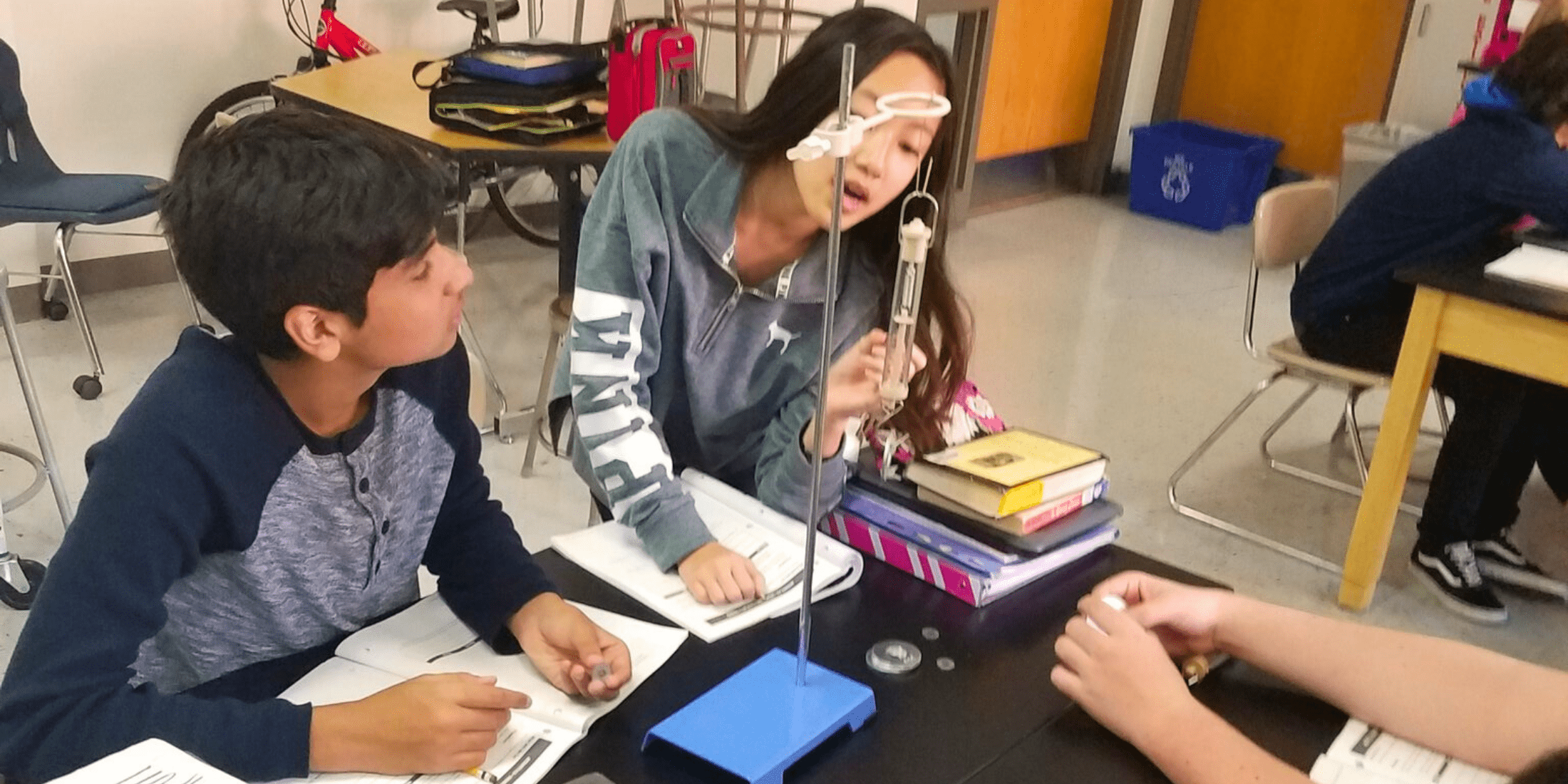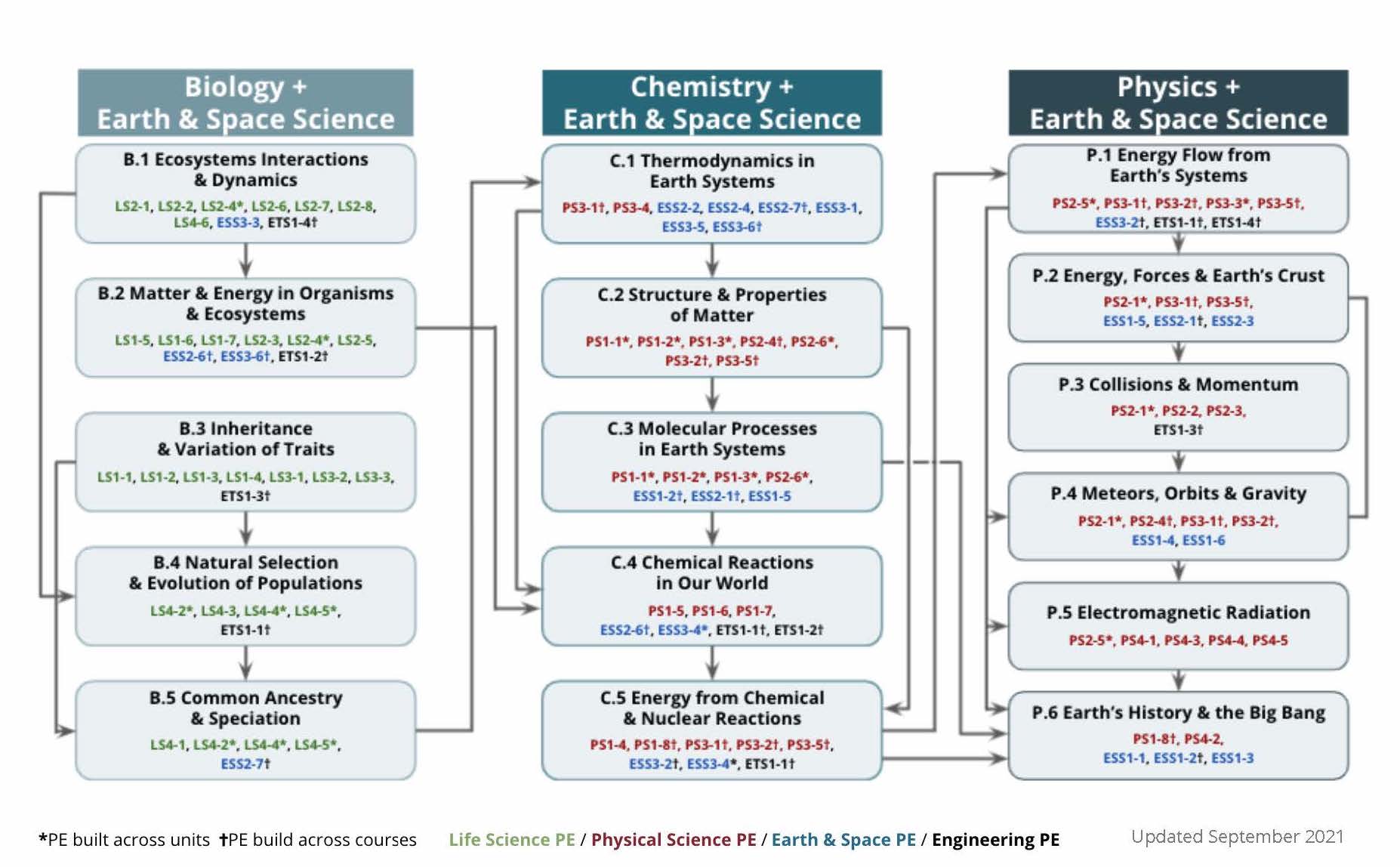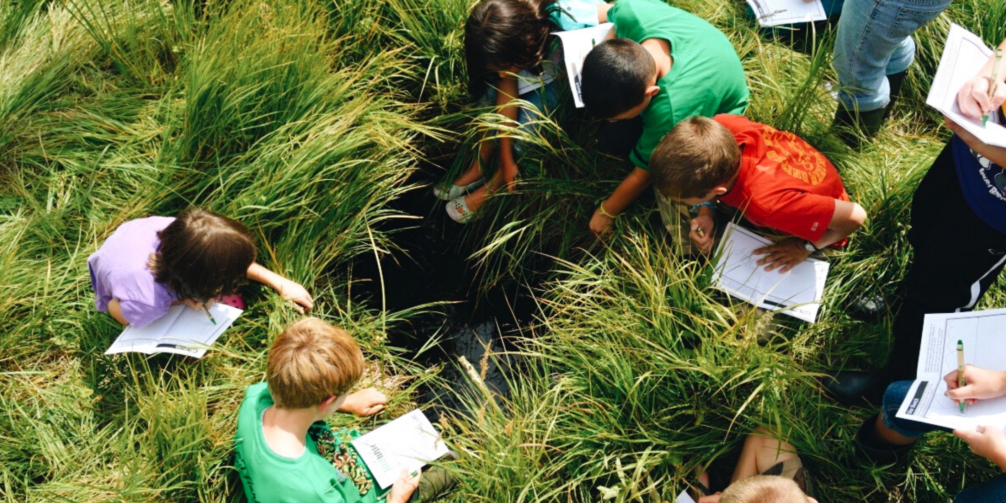The Future of High School STEM Education: Rethinking the High School Science Course Sequence (part 2)

QuickTake: Dive into part 2 of our 3-part series on the evolution of high school STEM. From traditional models to a future of integrated learning, see how the shift in high school science course sequence has evolved and how OpenSciEd's progressive science sequence equips students for STEM success. 🚀
Designing the High School Science Course Sequence
In our previous post, The Power of Project-Based Learning: Connecting High School STEM to the Real World, we delved into how project-based learning bridges the gap between theoretical knowledge and real-world application, igniting students’ passion for discovery and innovation. Now, we turn our lens to the evolution of another crucial component shaping secondary science education – the high school science course sequence.
The design of the high school science course sequence is more than just a timetable of subjects; it’s a critical pathway that shapes the foundational knowledge and skills of emerging scholars and innovators. From the early days of the B-C-P (Biology, Chemistry, Physics) sequence, educators have grappled with the best sequence to unlock the mysteries of science for young learners. This sequence hasn’t been static. Instead, it’s evolving with our understanding of how students learn best. It has undergone significant transformations, reflecting the need for a curriculum that keeps pace with scientific advancements and pedagogical insights. The debate continues about how to structure the sequence best to prepare students for a future driven by STEM innovation.
In this second post of our 3-part series on the future of high school STEM education, we’ll trace the compelling evolution of the high school science course sequence over the decades. We’ll see how it has been reimagined and reordered to drive deeper interdisciplinary learning. We’ll showcase how this ever-changing sequence has now been elevated again with OpenSciEd’s research-backed approach that integrates the strengths of past models while enhancing critical elements.
Let’s dive into the past, present, and future of the high school science course sequence!
Biology First: The Historical Rationale Behind the Classic High School Science Course Sequence (B-C-P)
The traditional high school science course sequence in the United States has followed a Biology-Chemistry-Physics (B-C-P) progression for over a century. This sequence took root in the late 19th and early 20th centuries when education shifted gears from classical studies to include a more scientific perspective to meet the demands of an industrializing nation. The initial rationale for starting with biology was its perceived accessibility—biological concepts were seen as more relatable to students’ everyday experiences. They required less mathematical rigor than physics or chemistry.
The B-C-P sequence became the cornerstone of American science education due to its practicality and alignment with the developmental stages of secondary education students. It mirrored the increasing complexity and abstraction of scientific disciplines while assuming a parallel development in students’ mathematical skills. Biology’s concrete and observable nature made it an ideal starting point for ninth graders, while the more mathematically demanding subjects of chemistry and physics were reserved for the later years of high school as students matured academically.
The longevity of the B-C-P sequence is a testament to its utility and adaptability. It served generations of students, providing a broad overview of scientific principles and methods. The sequence benefited from a straightforward structure that educators and administrators could quickly implement and manage within the constraints of school schedules and resources.
However, the traditional sequence hasn’t been without its critics and challenges. One limitation was its compartmentalization of scientific disciplines, often leading to fragmented learning experiences. Students would tackle biology without the foundational chemical principles that underpin biological processes or explore chemical reactions without understanding the physical laws governing these reactions. This siloed approach to teaching science was increasingly at odds with the real-world integration of scientific knowledge, where the boundaries between biology, chemistry, and physics are porous and interconnected.
Furthermore, as scientific knowledge rapidly expanded and technology advanced in the 20th century, science education needed to go beyond facts. It now had to develop students' critical thinking, problem-solving, and deeper understanding of the scientific process.
The Rise of “Physics First”
In the 1990s, some educators began to question the B-C-P model. They advocated an alternative approach called “Physics First,” which supports introducing physics concepts in high school to establish a foundation for learning chemistry and biology.
These introductory physics courses focus on conceptual understanding and hands-on learning rather than advanced math. By exploring physics phenomena like forces and energy through experiments and real-world examples, students gain fundamental science knowledge to apply across disciplines.
Proponents of Physics First argued that developing foundational physics knowledge earlier would establish a more robust scientific grounding for students. The basic physics concepts could then provide a helpful framework for learning chemistry.
Physics First supporters also noted that critical topics in biology and chemistry rely on physics principles, such as forces, energy, electricity, and nuclear processes. By learning physics concepts earlier, students would gain valuable tools to deepen understanding across scientific disciplines.
Although Physics First gained prominence in some school districts, the B-C-P status quo still dominates most high school programs. But calls continued to grow for rethinking the high school science course sequence.
Beyond B-C-P and Physics First: The Push for Change
While Physics First offered an alternative perspective, some researchers and educators argued that neither it nor the traditional B-C-P sequence truly reflected the interconnected nature of scientific disciplines. They pushed for a more integrated approach across the sciences.
Several factors drove this call for rethinking the entire sequence. Studies on student learning progressions in STEM revealed that learners build interconnected webs of knowledge over time rather than linear ladders. Related concepts across fields could reinforce each other when blended.
Physics First was a step toward connected learning by using physics ideas to explain chemistry. However, some still saw it as teaching disciplines separately. They advocated for fully interdisciplinary blending tailored to learning progressions.
Additionally, national reports showed U.S. students lagging in STEM achievement compared to global peers. Experts pointed to fragmented science education as a factor. This prompted examining instructional approaches that unified the sciences. While Physics First provided some benefits over the traditional pathway, like using physics concepts to clarify chemistry, educators recognized it still compartmentalized subjects.
Calls grew louder for reordering and completely reimagining the high school science course sequence to promote deeper interdisciplinary engagement. This push for a more connected science curriculum led to the emergence of innovative new approaches to the high school science sequence.
OpenSciEd: The High School Science Sequence Takes a Giant Leap Forward

The launch of OpenSciEd’s high school curriculum this year represents a significant milestone in high school STEM educational innovation. Developed through a collaborative effort that brought together educators, scientists, and curriculum experts, OpenSciEd is pioneering a modern approach to science instruction.
Their biology-chemistry-physics scope and sequence reflect common market practice. But their approach to topics within courses facilitates interconnected, reinforced learning. The evidence-based curriculum aligns with the Next Generation Science Standards (NGSS) and ushers in the next evolution in the high school science course sequence saga. It’s a testament to the power of aligned education standards, integrating the three dimensions of NGSS — disciplinary core ideas (DCIs), science and engineering practices (SEPs), and crosscutting concepts (CCCs) — into a seamless instructional journey. The curriculum designers leveraged insights from past models while crafting an enhanced scope and sequence tailored to interdisciplinary blending.
The decision to integrate middle school physical science concepts into high school biology is a strategic leap toward continuity in learning. By tapping into the students’ prior knowledge, OpenSciEd fosters an educational environment where earlier lessons become the building blocks for more advanced science topics. This scaffolded knowledge paves the way for a more profound understanding of physics, preparing students for the progressive theoretical thinking required in their final high school years.
The sequence also weaves Earth and Space Sciences (ESS) and Engineering (ETS) throughout the three-year high school program, providing a narrative that connects the cosmos to the classroom.
Compared to the traditional high school science course sequence, OpenSciEd stands out by comprehensively blending disciplinary concepts rather than compartmentalizing subjects. Learning progressions intentionally weave related ideas across courses to support student knowledge construction.
Additionally, authentic lab investigations and engineering design projects are embedded throughout OpenSciEd courses rather than confined to a single class. This allows students to apply science practices and see how concepts intersect continually. While past models made incremental steps, OpenSciEd provides the fully integrated experience envisioned by science education reformers.
Embracing the Future
From the foundational B-C-P sequence to the insightful Physics First movement and the innovative OpenSciEd curriculum, we’ve witnessed a pedagogical transformation that speaks volumes about our priorities in science education. This reflection on the changing landscape reveals that the goal has remained constant - providing students with the best possible science education.
Implementing OpenSciEd’s curriculum is a vital step forward in this ongoing evolution, providing a platform for students to engage with science in an intellectually stimulating and globally relevant manner. Adopting a curriculum responsive to current research, societal needs, and scientific advances is invaluable. It ensures our teaching evolves with knowledge while equipping students to meet future challenges.
Ready to Explore OpenSciEd High School Science Curriculum?
If you’re ready to bring state-of-the-art instruction to your school through OpenSciEd’s curriculum, Activate Learning is here to help. Contact us today to learn more and get started! Learn more about our complete OpenSciEd implementation support, including materials, professional learning, and the Activate Learning Digital Platform. To read more about the OpenSciEd high school sequence design and development, download the full scope and sequence document below.
Stay tuned for the final post in this special High School STEM series, returning in January! 🚀
* * * * *




